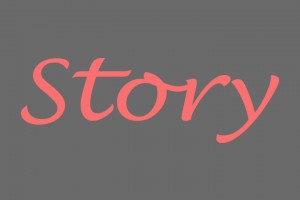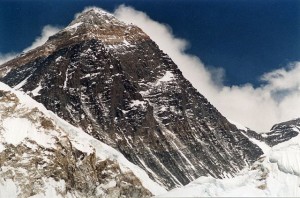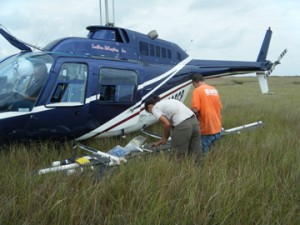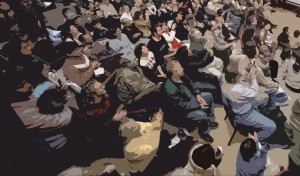 In this series of posts, I’ve been explaining how video-making can have a feedback effect on other communication skills such as scientific writing and speaking. In the first post of this series, I described the first lesson I learned, which has had a huge effect on my overall communication skills: Distill Your Message. The second post, Focus on Your Audience, emphasized how changing your perspective to that of the audience can improve your writing.
In this series of posts, I’ve been explaining how video-making can have a feedback effect on other communication skills such as scientific writing and speaking. In the first post of this series, I described the first lesson I learned, which has had a huge effect on my overall communication skills: Distill Your Message. The second post, Focus on Your Audience, emphasized how changing your perspective to that of the audience can improve your writing.
In this post, I describe how learning to use storytelling techniques to make science videos has shown me how to improve my journal articles and conference presentations.
People don’t remember facts and figures, but they do remember a story.
One of the biggest challenges for me in making videos about science has been learning how to let go of my facts and figures and just tell a good story about my work. I know how to tell stories—and I have a lot of them after forty years of field research in remote tropical regions (here’s one). However, it’s hard to put the scientific facts, which I think are important for the reader or viewer to know, into a narrative that holds people’s attention— in a way that doesn’t make me feel uncomfortable about revealing personal information.
I’ve posted previously about the benefits of storytelling in science. Humans are uniquely attuned to stories. People won’t remember data or a list of facts about the importance of tropical forests, but they will remember a story about how you narrowly missed being eaten by a crocodile while collecting soil samples in a Panamanian coastal forest. By telling stories, we can also help overturn stereotypes about scientists. For example, by starting a science talk or video with a brief personal story, we can show that scientists are a varied and interesting group of people who love their work, rather than a bunch of strange nerds with no life outside of the laboratory. TED talks are famous for having speakers tell stories in their science and technology presentations and, consequently, are enormously popular.
Scientific papers are stories, and the author is a storyteller.
But how might storytelling methods be helpful in writing scientific papers or preparing a talk for a technical audience? A story is a narrative that describes a sequence of events in a specific pattern, called the story arc: premise, rising action, climax, falling action, and resolution. The fact that storytelling follows a formal structure is surprising to people who view it as a formless, unpredictable process. Instead, stories follow quite predictable and repeatable patterns (see this video of the author Kurt Vonnegut explaining story patterns).
Similarly, in writing a scientific paper, we don’t simply relate a series of experiments and results in a haphazard way. Our journal articles recount a logical progression of ideas and actions leading to a conclusion: Introduction (what I set out to study and why), Methods (how I did it), Results (what I found), Discussion (what I think it means), and Conclusions (how it fits into the bigger picture). These components of a scientific paper are loosely analogous to the stages in a story arc: introduction/methods = premise, initial results = rising action, main result = climax, discussion = falling action, conclusions/significance/application = resolution. Some authors even identify a protagonist (leading character or hero/ine) and one or more antagonists (adversaries of the protagonist) in a scientific story (Hoffman 2014). Note that the protagonist is not necessarily the scientist, but might be a study organism, a chemical, a physical process, or some other focus of the study.
In other words, our scientific papers are stories, even if they are constructed within a formal framework. That makes us, the author, a storyteller, whether we like it or not, believe it or not.
But how, you may ask, does storytelling help us be better scientific authors?
A clear storyline guides and facilitates writing.
As I suggested in the first post in this series, distilling your message before starting to write a paper will help you develop a clear storyline that will guide your writing. Without this guiding storyline in mind, a writer will often ramble and wander around with no clear path leading to a logical conclusion. I’ve always been pretty good at identifying and expressing my “take-home message” in papers and presentations. However, the process of making videos about my research drove home the value of identifying my “story” before beginning to write.
Prior to filming, I write out what my message is and what information I need to present to get that message across to viewers. Before writing a paper, I pore over my data, statistics, and graphs until I see a clear story, and then I think some more about how it fits into a bigger picture. If I cannot articulate in one or two sentences what I found in a study and put it into a broader context, then I know I’m not ready to begin writing. Once I get that storyline settled, though, I find it much easier to organize my writing and the logical flow of the article to tell a compelling story about my topic.
Key components of a paper should repeat the story.
By key components, I’m talking about the paper title, abstract, and figures—those parts that may be the only ones seen by many readers. If the title is the only thing people see, it needs to express your story: “Land subsidence accounted for half of relative sea-level rise in Chesapeake Bay marshes“. A more expanded, but still condensed, version of the story is given in the abstract (aim, methods, main result(s), interpretation, significance). The paper’s figures are also developed and presented in a way that reiterates the story—that is, someone should be able to look at the figures and tables and grasp what story is being told in the text narrative. In addition, each figure, if well done, can tell a mini-story about each aspect of the study.
These components (title, abstract, figures) happen to be the parts that novice writers leave to the last minute and spend little time crafting. I would argue that these are the first items that should be prepared, and they should be revisited and revised throughout the writing process.
The figures are designed and arranged in sequence, much like a storyboard for a video.
My first task in writing a paper is to construct the figures and tables. The figures are carefully designed and ordered, with the main figure containing the key finding accompanied by other figures/tables, which provide supportive evidence to confirm the main result or its interpretation. Maps, diagrams, or photos may also be used in the methods to illustrate how and where the study was conducted—but only if they are essential to the reader’s understanding. Any data that do not contribute to the story are placed in a supplemental materials section.
The idea of starting with the visual parts of a paper and arranging them in a particular order is analogous to “storyboarding” in filmmaking. A storyboard depicts a sequence of scenes in a film and shows how the story will progress and what perspectives and media (photos, illustrations, animations) will be used to convey each piece of the story. A paper’s figures (diagrams, photos, drawings, graphs), when arranged in a logical sequence, depict the story of your study in a similar way. I typically redraw and rearrange the figures for a paper several times until I’m satisfied that they tell a coherent story. Only then do I proceed with writing the narrative.
A paper’s title and abstract should give a condensed version of the story.
I learned to craft the titles of my videos so that someone who came across them would decide that they contained the information they were seeking. YouTube viewers, for example, are presented with many choices for any particular topic. Decisions to click on a video link are made quickly based on the title and the thumbnail image. You may have found a video through a set of search terms; if the title tells you that the video is exactly what you are looking for, then you click the link.
The same idea applies to crafting the title of a paper. By articulating your story in the title, you tell a prospective reader what they will find in your paper: “Wetland plant response to elevated CO2 is mediated by salinity and flooding levels“. Contrast that title with this less informative one: “Effects of CO2, salinity, and flooding on wetland plants“. I may later modify the title after the first draft of the manuscript is done, but this initial title helps keep me on track.
I next prepare a draft abstract to tell a condensed version of my story. I like to think of a paper’s abstract as analogous to a movie trailer. The purpose of a movie trailer is to provide a synopsis of a film and to entice people to watch the movie. Similarly, an abstract’s purpose is to provide a brief summary of a paper and convince people to read the full paper. The movie trailer analogy is not so far-fetched, as some journals are now encouraging video abstracts, in which the authors explain their study using audiovisual media instead of text. There is even software (iMovie) that facilitates the creation of a trailer about a scientific publication.
Use Search Engine Optimization (SEO) to increase a paper’s discoverability.
When I started making videos, I quickly realized that I needed to craft the video titles, descriptions, and tags so that people searching online could easily find them and, once found, would decide to watch them. This attention to online discoverability is termed Search Engine Optimization (or SEO). After observing that my choice of wording affected the numbers of viewers playing my videos, I realized that the same SEO could be applied to scientific papers.
Because titles are particularly important to search engines, a paper’s title should be carefully written to contain key search terms— that is, words that someone would use to look for a paper in your subject area. The keyword field, similar to “tags”, should additionally include common search terms not included in the title. For example, if I’m writing a paper on the effects of atmospheric CO2 on plants, a search term I would include in the keyword list is “climate change”. Finally, the abstract should repeat key terms contextually throughout because search algorithms assess repetition in assigning ranking of a text link. More about SEO for scientific articles can be found here.
Let the audience participate in crafting the story.
In making a science video, too much information can annoy the viewer and obscure the key message. The same is true for a scientific paper or presentation. An early mistake I made in scientific writing was that I provided too many details—that is, I described every blip in the data and then tried to explain them all in the discussion section (no wonder my early papers went way, way over the word limit). A better way is to describe general patterns and let the reader pore over the details provided in figures and tables—where they will see that your description and interpretation of the patterns make sense.
At the other extreme, are writers who provide too little information and, consequently, cause the reader to question the validity of the conclusions. They set out a few breadcrumbs along the path but not enough for the reader to easily follow. Writers in this category are often novices who are timid or uncertain about how to interpret their data. They try to write their papers with no storyline and end up wandering around and never arrive at a satisfactory conclusion.
The scientific storyteller should provide just enough detail to lead the reader toward a logical conclusion, which they are more likely to accept because they participated in the interpretation. In other words, let the reader do some of the mental work. This shared mental effort is used to great effect in filmmaking when some things are left to the viewer’s imagination (think about the shower scene in Alfred Hitchcock’s Psycho). Similarly, the scientist storyteller can allow some leeway for the reader to interpret the presented data and to ponder alternative explanations.
What about the naysayers?
I realize that some scientists strongly object to the idea of storytelling in constructing papers—they argue that it can lead to a distorted, not-quite-truthful narrative (see Katz 2013 but see the original article and reply by the authors to these charges). Or that the story is presented as the only way to interpret the data—leaving no room for other explanations. This negative view of storytelling is based on a false set of assumptions.
One assumption is that the scientist storyteller embellishes, obfuscates, or somehow presents something that is not supported by the data. This is a false assumption based on the idea that all storytellers exaggerate or fabricate their material to better entertain audiences (Katz 2013). For one thing, this characterization may apply to some storytellers, certainly those weaving fictional tales, but not to all raconteurs. Also, the main purpose of a scientific paper is not to entertain but to inform, and this difference in purpose affects how storytelling is applied. For example, one of my goals in writing a paper is clarity, and having a clear story in mind helps me accomplish this. This approach is not embellishment or fabrication; it’s lucidity. Without a clear story, I’m just wandering in a scholarly wilderness—and dragging the unfortunate reader along with me. I doubt that I would have gotten many papers published had I simply provided a data dump and invited the reader to figure it out on their own.
Another false assumption is that storytelling in science leads to bias (Katz, 2013). In other words, a scientist has a pre-conceived story in mind and presents only those findings that are compatible with it. Bias is always a danger in science, but I don’t think striving to tell a coherent story necessarily promotes or is evidence of bias. As authors, we have an obligation to present our findings in a comprehensible sequence and to guide the reader in their interpretation. For example, we don’t present in a paper the results of experiments in the actual sequence they were conducted; instead, they are re-ordered to make it easier for the reader to follow and understand the material.
I think that we can apply storytelling techniques to scientific writing without compromising accuracy, veracity, or credibility of a paper. An editorial in Nature Methods (Should Scientists Tell Stories), in response to the Katz 2013 piece, states:
“Scientists are not automata and, in today’s world, operate under substantial time pressures. Even if the scientist’s colleagues in this idealized setting had the patience and time to navigate through a long, uninterpreted, purely factual exposition and to sufficiently grasp what was done and its significance, it would still be a cripplingly inefficient process….An argument for papers written purely as a factual blow-by-blow account of experiments does not sufficiently take into account this reality.”
As for me, I would much rather read a paper that weaves a fascinating, true tale of scientific discovery than one in which the authors have simply provided a detailed record of their study. I strive to make my papers both enjoyable to read and memorable, and a dry recitation of the findings does not make for an indelible paper. Telling an interesting story, i.e., leading the reader through a maze of data and showing them something they had not considered before, helps a paper become memorable.
As I said at the beginning of this post, stories are a form of communication that humans recognize and remember. Why not take advantage of this deeply human characteristic and use it to develop better, and more truthful, narratives about our science?
 Writing a scientific article can be an intimidating and challenging task for first-timers. I vividly recall my first effort. I was initially overwhelmed with the idea because I was thinking about the entire paper in the same way an amateur mountaneer might view Mt. Everest: one long climb to the top. How would I ever reach the summit when I’ve never set foot on a mountain before?
Writing a scientific article can be an intimidating and challenging task for first-timers. I vividly recall my first effort. I was initially overwhelmed with the idea because I was thinking about the entire paper in the same way an amateur mountaneer might view Mt. Everest: one long climb to the top. How would I ever reach the summit when I’ve never set foot on a mountain before?


